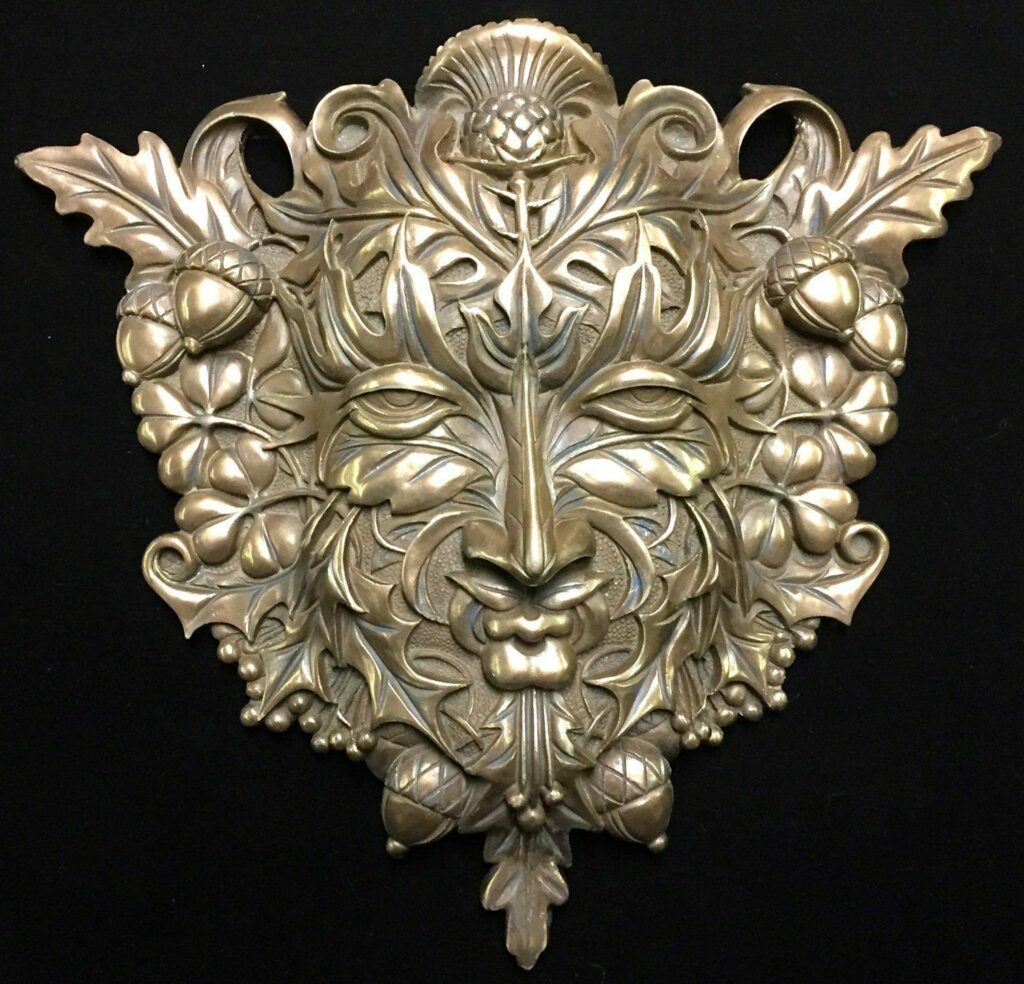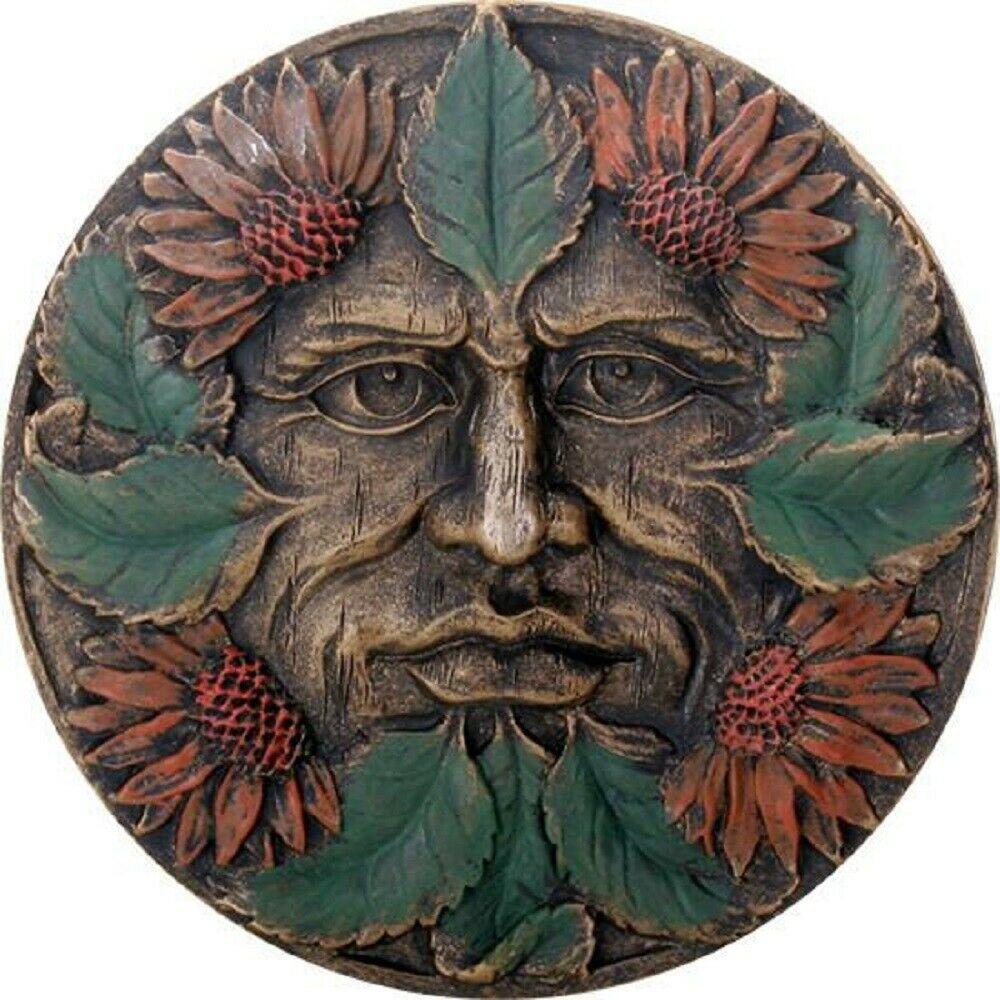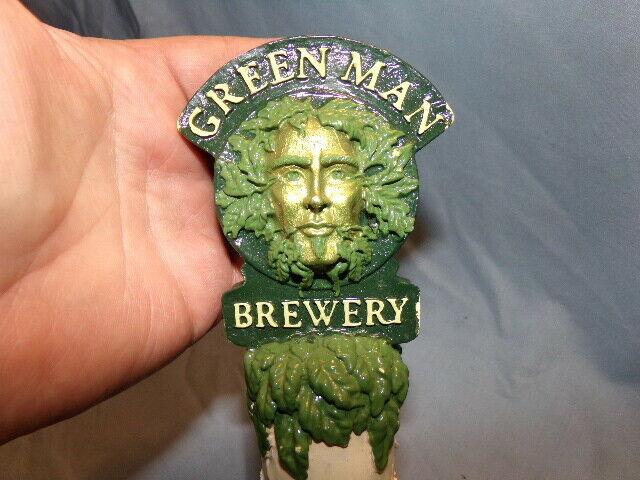#Green #Man #Spiritual #Icon #Ages #WorthPoint

I was a little creeped out the first time I saw a Green Man. A masculine face comprising dense leaves, artistically rendered from clay, peered (or maybe leered?) at me from a handmade wall plaque at an art show.
This leafy man’s face was suddenly everywhere for days after that encounter—on furniture in an antique shop, as a piece of hanging yard art in a catalog. How could I have let him go unnoticed for so long? And more importantly, is the Green Man a spiritual figure, or is he just a decoration, or the perfect basis for a marketing logo? I traversed the forest of knowledge, if you will, to learn more.
Who Is This Masked Man?
The Green Man is a male face made of leaves and sometimes twigs. He can be pleasant or severe or even in agony. His face has been artistically reimagined in natural foliage, wood, cement, clay, resin, and metal. He looks a hipster in some interpretations; in others, he leans medieval. He could be a little of both and then some.
But long ago, he was simply a nameless spirit, a god attached to nature and wildlife, according to pagan author and educator Patti Wigington. She noted the figure has long been considered a “symbol of life found through vegetation—essentially the cycle of life and Earth itself.”
It makes sense. Thousands of years ago, the forest was indeed dark and scary. But it also offered plants for foraging and game for meat, which meant entering such a vast place was necessary. And while it became desolate in winter, the forest returned to life in spring. “It would be logical,” Wigington said, “for early peoples to have applied some sort of spiritual aspect to the cycle of life, death, and rebirth. If you had just spent the winter starving and freezing,” she said, “when spring arrived, it was certainly time to give thanks to whatever spirits watched over your tribe.”
Wigington said that the Green Man appears in church carvings as far back as the eleventh century. As Christianity spread, she added, the Green Man was forced into hiding, although stonemasons still left secret images of his face on cathedrals and churches.

A Spirit-Turned Icon
While the Green Man figure has existed for centuries, he lacked an official name until 1939. That was when Julia Somerset, known better as Lady Raglan, gave him the name “Green Man” in a magazine article she wrote entitled “The Green Man in Church Architecture,” and the name stuck.
Also, over the last fifty years, the Green Man has become “a surprisingly durable alt icon” after being adopted by the New Age movement of the 1970s, according to writer Jo Livingstone. She noted the Green Man Festival in Wales began in 2003, and in 2007, “Green Man” was the theme of Burning Man, Nevada’s annual counter-culture celebration.
“It’s a remarkable trajectory for a figure who, on one level, doesn’t even exist,” Livingstone wrote. “Despite his face being everywhere in the medieval period, a historical Green Man story seems to be attested precisely nowhere.”
The Modern Green Man
The Green Man today continues his hip icon status alongside prolonged environmental awareness and increasing concerns over climate change.
Carolyne Larrington, the author of The Land of the Green Man, calls him a “vegetation god” who represents “all that the modern world undervalues, excludes, or lacks.” She added, “his appearance, as a hybrid of man and plant, insists that humans are inextricably part of that natural world which we in the West are so keen to subjugate.”
Collecting the Green Man
Art and collectibles are readily available for Green Man enthusiasts. They are in tandem with the growing popularity of pagan and Wiccan practices that often embrace and advocate for Nature and Earth. USA Today notes that the number of Americans who identify with Wicca or paganism has risen from 134,000 in 2001 to nearly 2 million today and has been growing steadily since the 1960s, with much of the growth coming from women. Pieces like resin boxes, jewelry, wall art, chalices, and altar cloths are popular among followers and collectors.
Higher art also invokes the Green Man and even a close relative called the Tree Ent, which is basically a tree with human characteristics. If you enjoy this theme, look for the increasingly rare works of 1970s San Francisco artist Jason Christoble, who created Tree Ent lanterns and planters from clay called “Matchless Grove.” His pieces included a story ending with the phrase, “If your world is in darkness, we will light it. If you love a plant that needs a home, we will serve it, and if you care for another person, let us be your gift.” Depending on their condition, his pieces can sometimes sell for hundreds.
Also note the popularity of Burning Man 2007 items, including posters, ticket stubs, and souvenirs like beer taps from the Green Man Brewery in Asheville, South Carolina, whose Green Man logo is right out of the cool hipster playbook. Outdoor wall art, like a seasonal Green Man plaque, is easy to find on Etsy or eBay.

A Persistent and Prolific Icon
It’s clear then that the Green Man can take on many meanings, making him attractive to the masses. I now have a large metal Green Man hanging on my back porch as a decorative piece and an Earth symbol that is important to me. Plus, he looks gentle and kind.
For a figure with no real back story, this man with a face of leaves is quite a prolific actor. As Livingstone wrote, “he is nowhere but everywhere.” He reminds me of the lyrics to “Grace Kelly” by British artist Mika:
“I could be brown, I could be blue, I could be violet sky, I could be hurtful, I could be purple, I could be anything you like.”
Between excursions to hunt for antiques and vintage décor, Lynda Houston is busy restoring her 1950s cottage in Cincinnati, Ohio. She and her partner Dave Beck operate TheRustInPeaceShop on Etsy.
WorthPoint—Discover. Value. Preserve.



